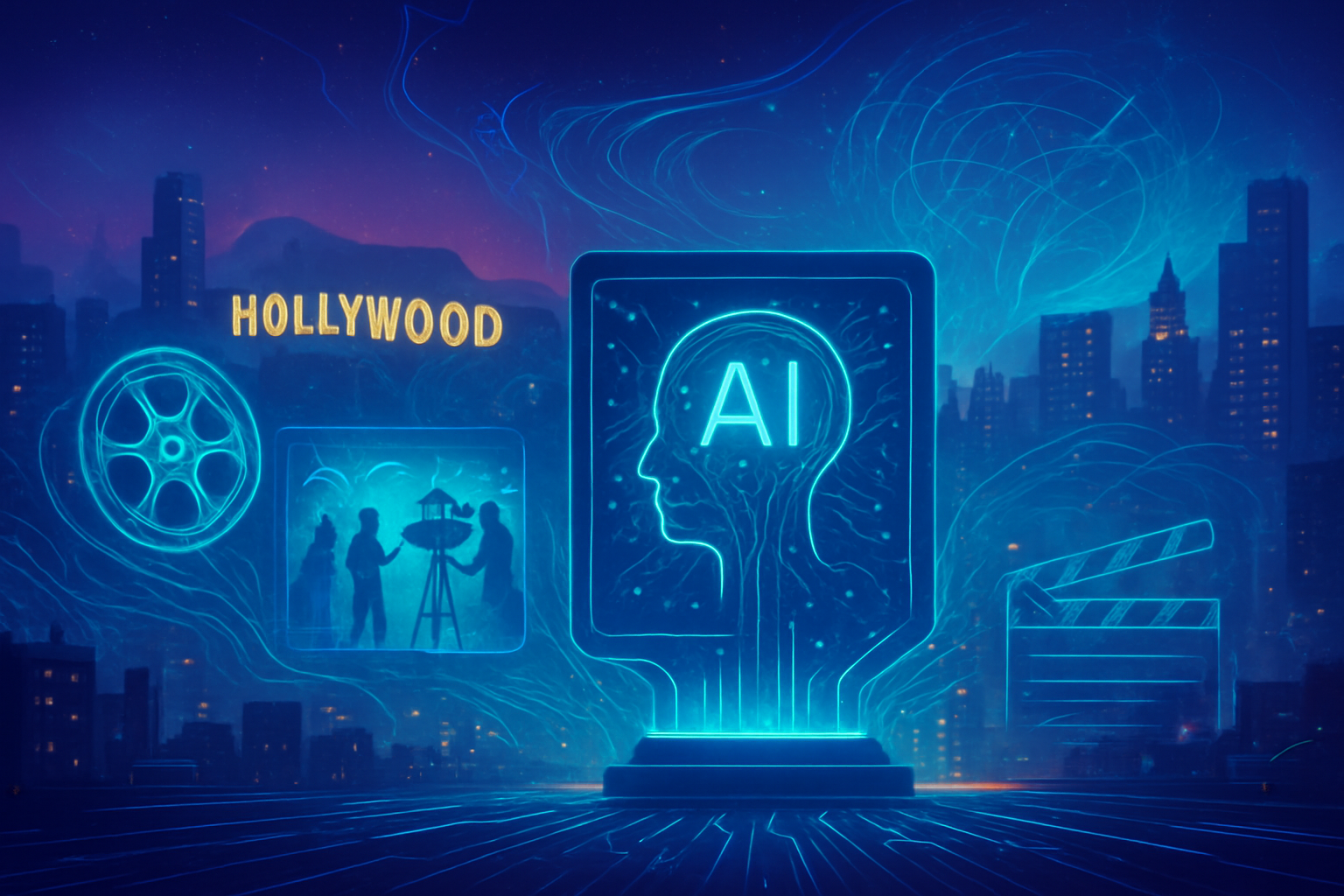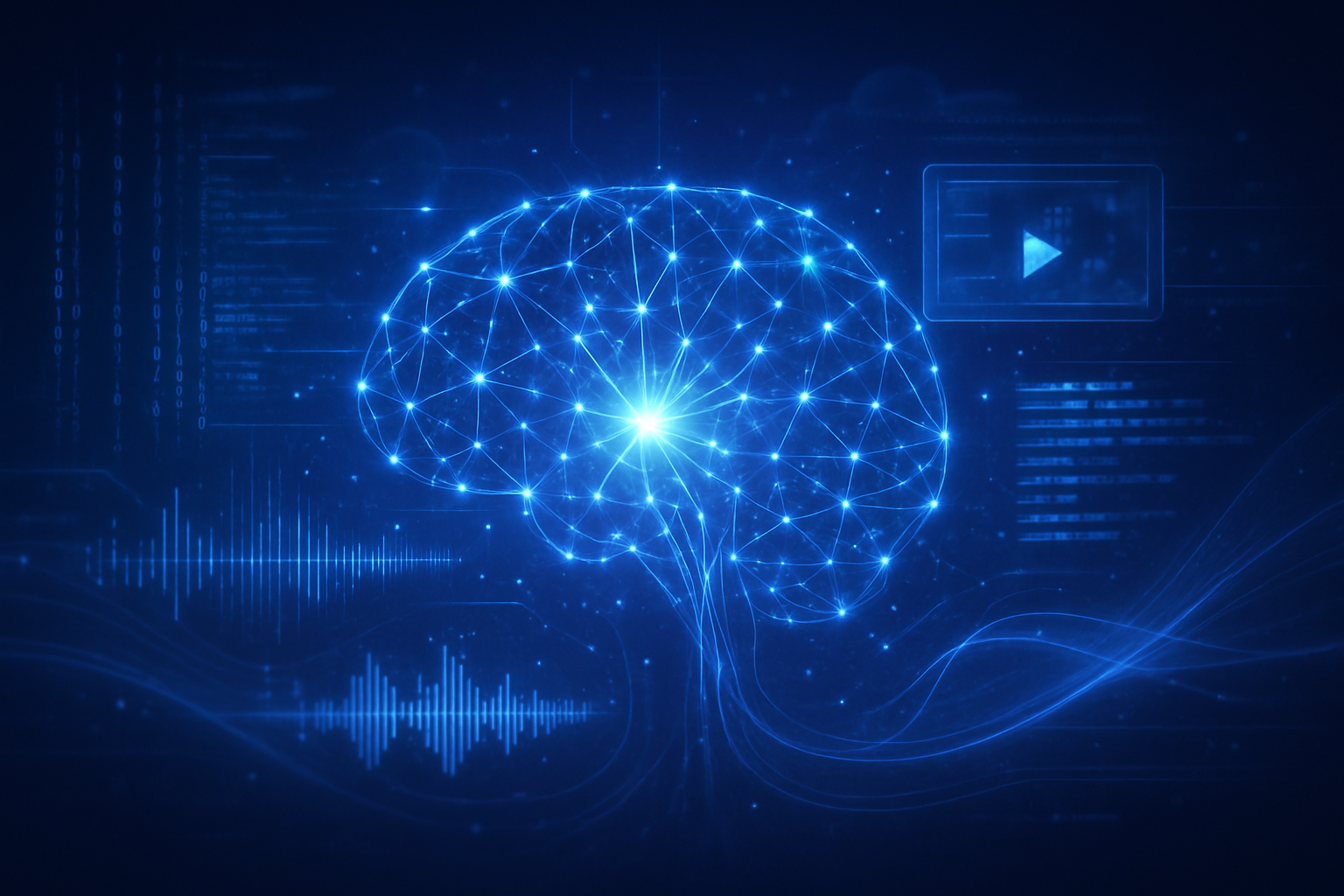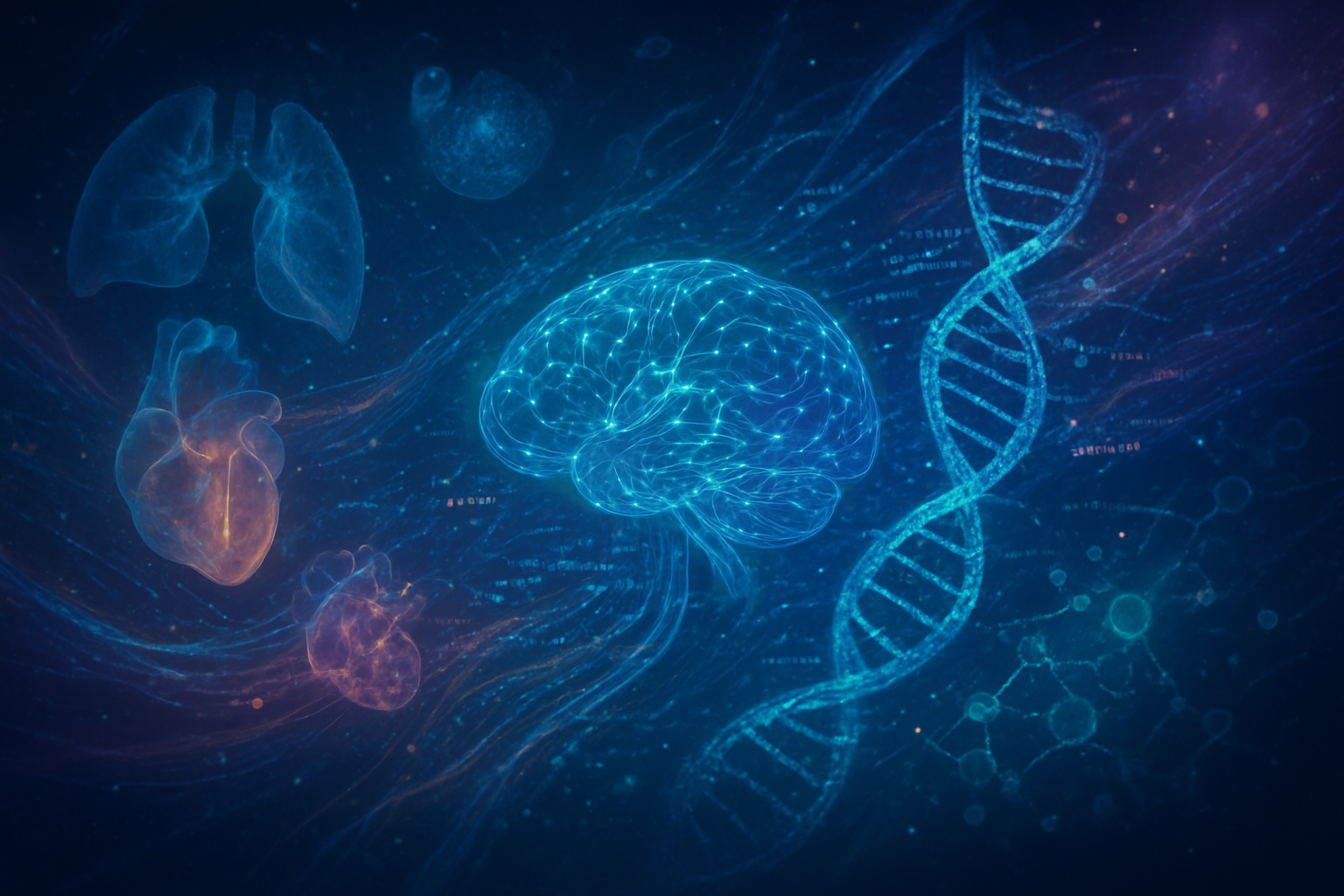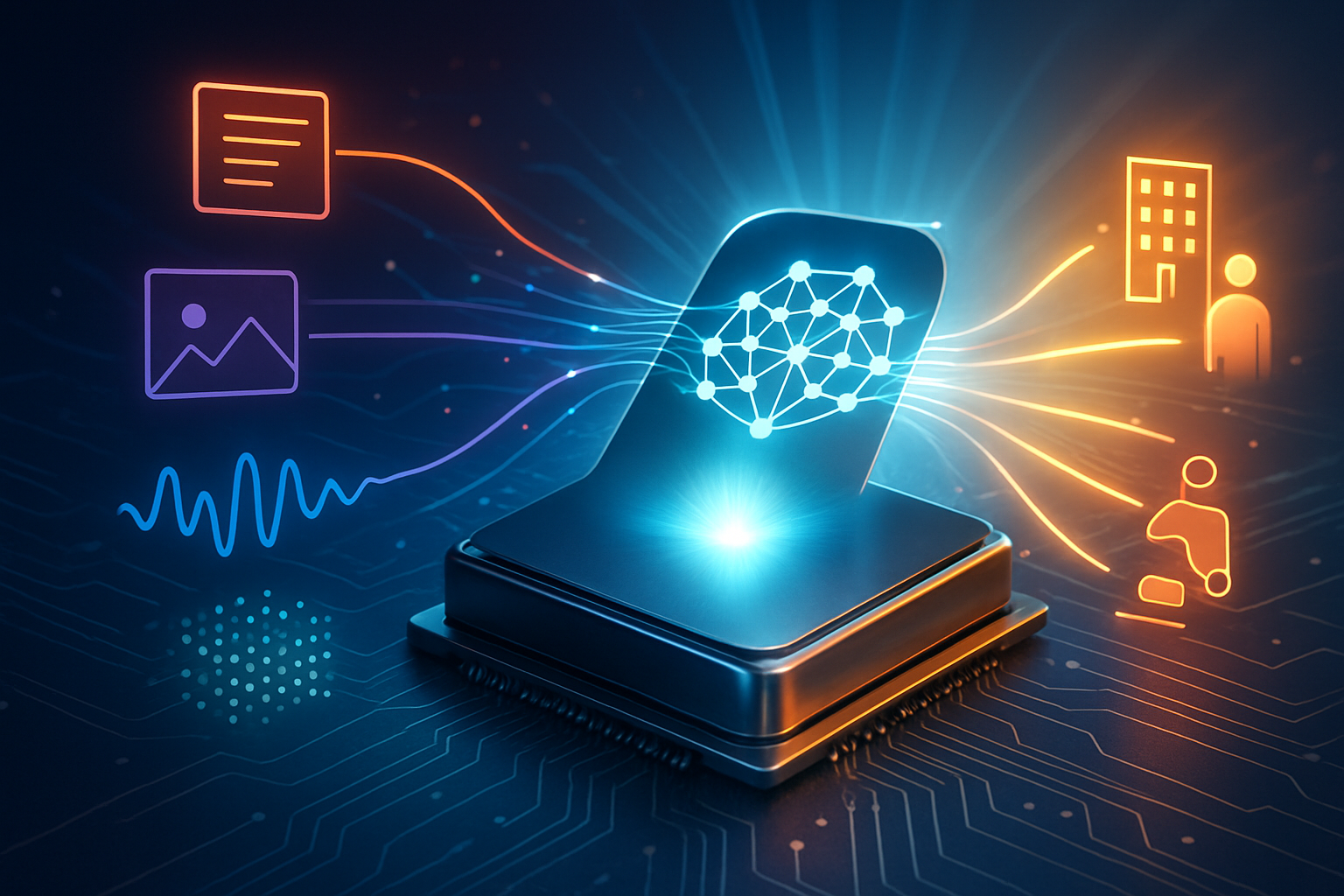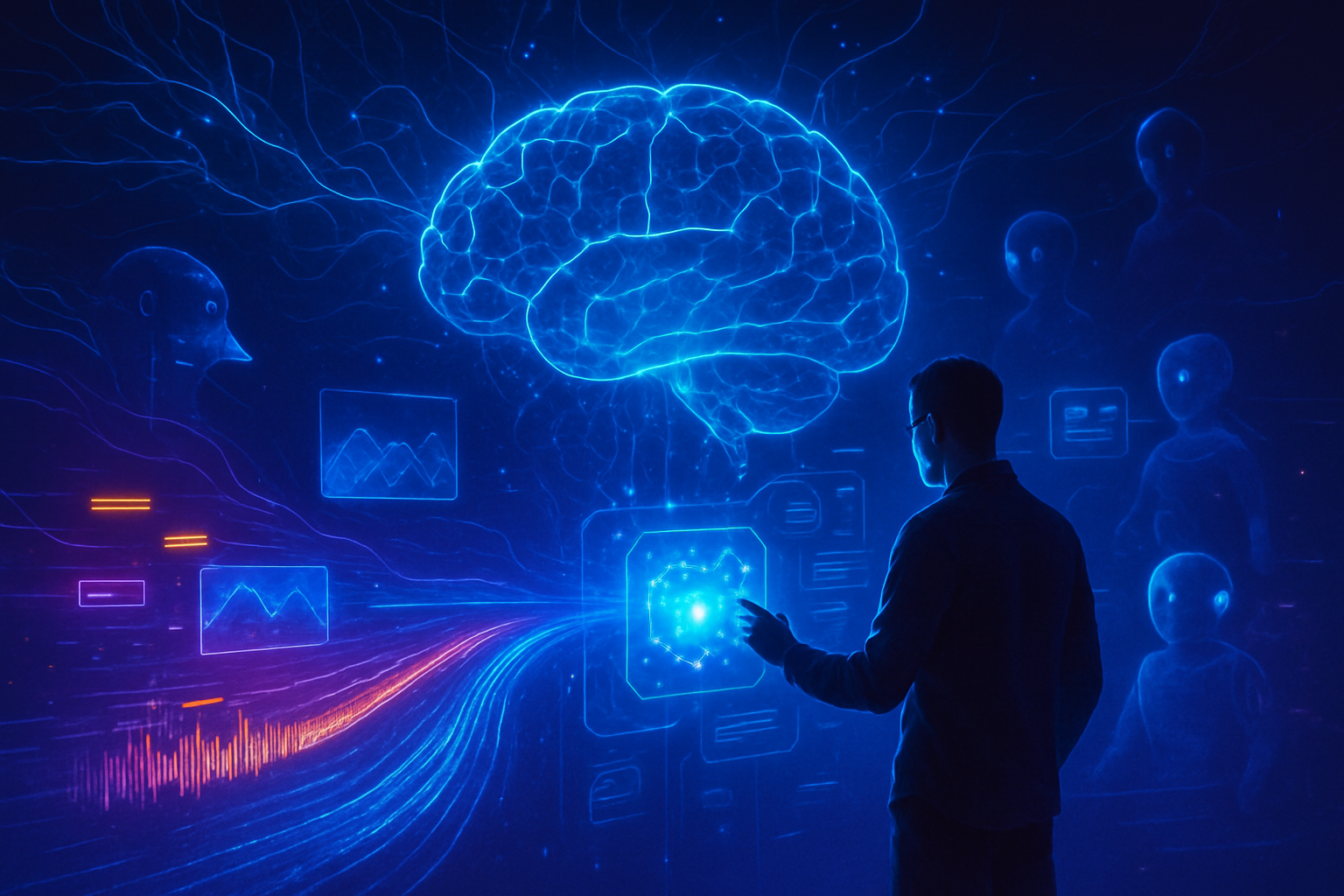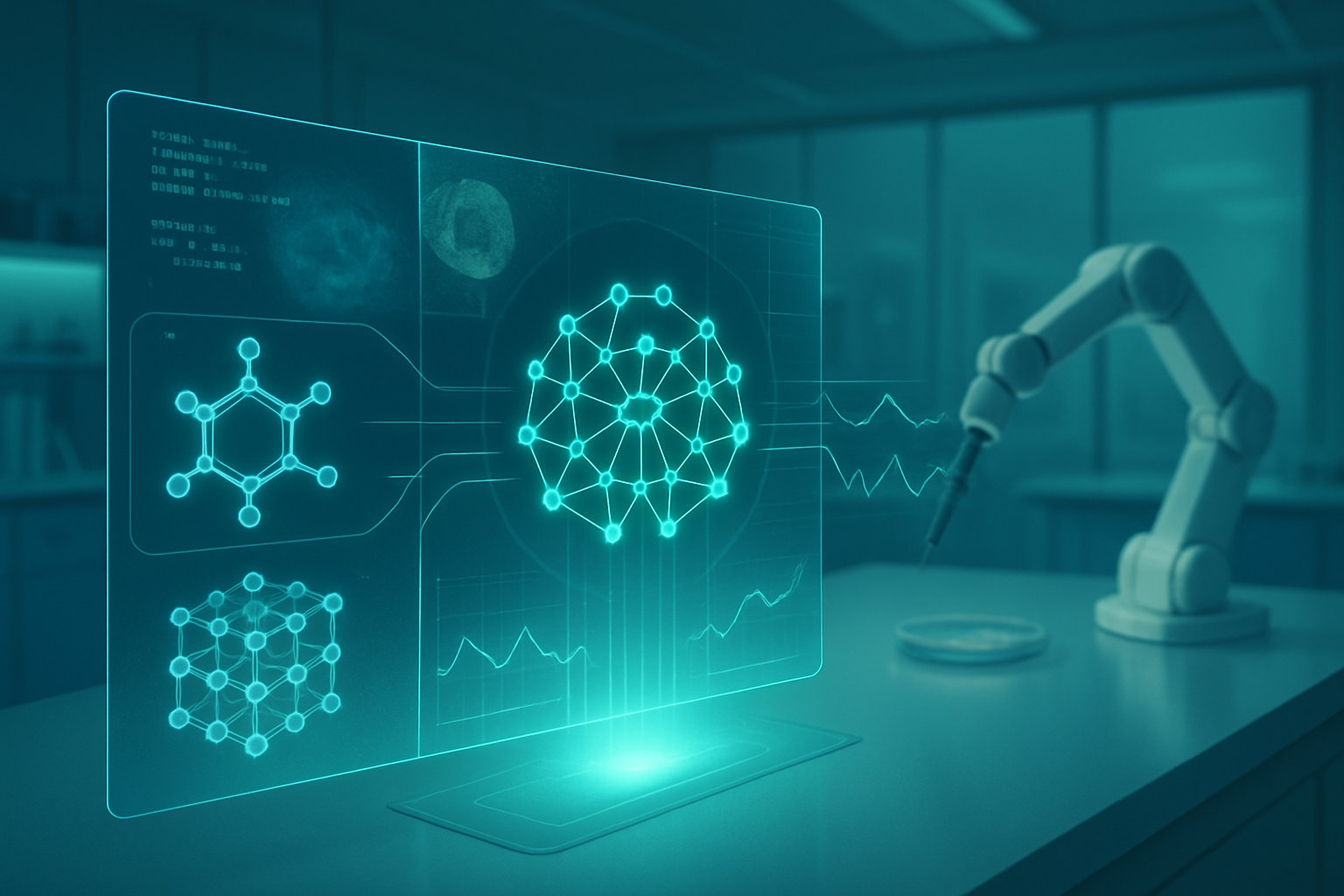Shanghai, China – In a significant stride for artificial intelligence, StepFun AI, a prominent player in the global AI landscape, has officially unveiled its revolutionary Step-Audio-R1 model. This open-source audio large language model (LLM) is poised to redefine how AI processes and comprehends sound, directly addressing the long-standing "inverted scaling" problem that has hampered audio reasoning. Released in late November to early December 2025, with its technical report updated on November 19, 2025, Step-Audio-R1 represents a critical breakthrough, moving AI closer to genuinely understanding acoustic data rather than relying on textual interpretations.
The immediate significance of Step-Audio-R1 lies in its unprecedented ability to implement Chain-of-Thought (CoT) reasoning directly on raw audio waveforms. This allows the model to generate logical reasoning chains explicitly connected to acoustic cues like pitch, timbre, and rhythm. By grounding its "thoughts" in the sound itself, Step-Audio-R1 promises more accurate, efficient, and nuanced processing of audio inputs across a myriad of tasks, from complex speech understanding to environmental sound analysis and intricate music interpretation. Its release marks a pivotal moment, signaling a new era for audio AI and setting a higher benchmark for multimodal AI development.
Unpacking the Technical Marvel: Modality-Grounded Reasoning
The Step-Audio-R1 model stands out as a technical marvel due to its innovative approach to audio understanding. At its core, the model is the first audio language model to successfully integrate and benefit from Chain-of-Thought (CoT) reasoning. Unlike previous models that often resorted to textual surrogates or imagined transcripts to infer meaning from sound, Step-Audio-R1's CoT reasoning is genuinely grounded in acoustic features. This means its internal logical processes are directly informed by the raw sonic properties, ensuring a deeper, more authentic comprehension of the audio input.
A key innovation enabling this breakthrough is the Modality-Grounded Reasoning Distillation (MGRD) framework. This iterative training method directly tackles the "modality mismatch" issue, where audio models struggled to align their reasoning with the actual auditory data. MGRD systematically shifts the model's reasoning from abstract textual interpretations to concrete acoustic properties, allowing for a more robust and reliable understanding. The model's sophisticated architecture further underpins its capabilities, featuring a Qwen2-based audio encoder that processes raw waveforms at 25 Hz, an audio adaptor for downsampling to 12.5 Hz, and a powerful Qwen2.5 32B decoder. This decoder is programmed to always produce an explicit reasoning block within <think> and </think> tags before generating a final answer, providing a transparent and structured reasoning process.
The performance metrics of Step-Audio-R1 are equally impressive. It has demonstrated superior capabilities, reportedly surpassing Google Gemini 2.5 Pro and achieving results comparable to Gemini 3 Pro across comprehensive audio understanding and reasoning benchmarks. This includes excelling in tasks related to speech, environmental sounds, and music, showcasing its versatility and robustness. Furthermore, StepFun AI has developed a real-time variant of Step-Audio-R1, supporting low-latency speech-to-speech interaction, which opens doors for immediate practical applications. The model's open-source release as a 33B parameter audio-text-to-text model on Hugging Face, under the Apache 2.0 license, has been met with significant interest from the AI research community, eager to explore its potential and build upon its foundational advancements.
Reshaping the AI Competitive Landscape
The introduction of Step-Audio-R1 by StepFun AI carries significant implications for the competitive landscape of the artificial intelligence industry, impacting tech giants, established AI labs, and emerging startups alike. StepFun AI (Shanghai Jieyue Xingchen Intelligent Technology Company Limited), founded by former Microsoft research leader Jiang Daxin, has quickly established itself as one of China's "AI tigers." This release further solidifies its position as a formidable competitor to global leaders like OpenAI, Anthropic PBC, and Google (NASDAQ: GOOGL).
Companies heavily invested in multimodal AI and audio processing stand to directly benefit from Step-Audio-R1's advancements. StepFun AI itself gains a substantial strategic advantage, showcasing its ability to innovate at the cutting edge of AI research and development. Its open-source release strategy also positions it as a key contributor to the broader AI ecosystem, potentially fostering a community around its models and accelerating further innovation. For tech giants like Google, whose Gemini models have been benchmarked against Step-Audio-R1, this development signals increased competition in the high-stakes race for AI supremacy, particularly in the domain of audio understanding and reasoning.
The competitive implications extend to potential disruption of existing products and services that rely on less sophisticated audio processing. Companies offering voice assistants, transcription services, audio analytics, and even music generation tools may find themselves needing to integrate or compete with the advanced capabilities demonstrated by Step-Audio-R1. Startups focusing on niche audio AI applications could leverage the open-source model to develop innovative solutions, potentially democratizing advanced audio AI. StepFun AI's strong funding from investors like Tencent Investments (HKG: 0700) and its rapid growth indicate a sustained push to challenge market leaders, making this release a significant move in the ongoing strategic positioning within the global AI market.
Broader Significance in the AI Evolution
Step-Audio-R1's emergence fits seamlessly into the broader trends of artificial intelligence, particularly the push towards more human-like understanding and multimodal capabilities. This breakthrough represents a crucial step in enabling AI to perceive and interact with the world in a more holistic manner, moving beyond text-centric paradigms. It underscores the industry's collective ambition to achieve Artificial General Intelligence (AGI) by equipping AI with a deeper, more nuanced understanding of various data modalities. The model's ability to perform Chain-of-Thought reasoning directly on audio, rather than relying on transcribed text, marks a fundamental shift, akin to giving AI "ears" that can truly comprehend, not just hear.
The impacts of this development are far-reaching. Enhanced audio understanding can revolutionize accessibility technologies, making digital interactions more inclusive for individuals with hearing impairments. It can lead to more intuitive and context-aware voice assistants, sophisticated tools for monitoring environmental sounds for safety or ecological purposes, and advanced applications in music composition and analysis. By providing a genuinely modality-grounded reasoning capability, Step-Audio-R1 addresses a long-standing limitation that has prevented audio AI from reaching its full potential, paving the way for applications previously deemed too complex.
While the immediate benefits are clear, potential concerns, as with any powerful AI advancement, may include ethical considerations surrounding deepfake audio generation, privacy implications from enhanced audio surveillance, and the responsible deployment of such advanced capabilities. Comparing this to previous AI milestones, Step-Audio-R1 can be seen as a parallel to the breakthroughs in large language models for text or foundational models for vision. It represents a similar "GPT moment" for audio, establishing a new baseline for what's possible in sound-based AI and pushing the boundaries of multimodal intelligence.
The Horizon: Future Developments and Applications
The release of Step-Audio-R1 opens up a vast landscape of expected near-term and long-term developments in audio AI. In the near term, we can anticipate a rapid uptake of the open-source model by researchers and developers, leading to a proliferation of new applications built upon its modality-grounded reasoning capabilities. This will likely include more sophisticated real-time voice assistants that can understand not just what is said, but how it is said, interpreting nuances like emotion, sarcasm, and urgency directly from the audio. Improved audio transcription services that are less prone to errors in noisy environments or with complex speech patterns are also on the horizon.
Longer term, the implications are even more profound. Step-Audio-R1's foundation could lead to AI systems that can genuinely "listen" to complex audio environments, distinguishing individual sounds, understanding their relationships, and even predicting events based on auditory cues. Potential applications span diverse sectors: advanced medical diagnostics based on subtle bodily sounds, enhanced security systems that can identify threats from ambient noise, and highly interactive virtual reality and gaming experiences driven by nuanced audio understanding. Experts predict that this model will accelerate the development of truly multimodal AI agents that can seamlessly integrate information from audio, visual, and textual sources, leading to more comprehensive and intelligent systems.
However, challenges remain. Scaling these complex models efficiently for broad deployment, ensuring robustness across an even wider array of acoustic environments and languages, and addressing potential biases in training data will be critical. Furthermore, the ethical implications of such powerful audio understanding will require careful consideration and the development of robust governance frameworks. What experts predict will happen next is a surge in research focused on refining MGRD, exploring novel architectures, and pushing the boundaries of real-world, low-latency audio AI applications, ultimately moving towards a future where AI's auditory perception rivals that of humans.
A New Era for Audio AI: Comprehensive Wrap-Up
The unveiling of Step-Audio-R1 by StepFun AI marks a pivotal and transformative moment in the history of artificial intelligence, particularly for the domain of audio understanding. The key takeaway is the successful implementation of Chain-of-Thought reasoning directly on raw audio waveforms, a feat that fundamentally changes how AI can interpret and interact with the sonic world. This breakthrough, driven by the innovative Modality-Grounded Reasoning Distillation (MGRD) framework, effectively resolves the "inverted scaling" problem and positions Step-Audio-R1 as a benchmark for genuinely intelligent audio processing.
This development's significance in AI history cannot be overstated; it represents a foundational shift, akin to the advancements that revolutionized text and image processing. By enabling AI to "think" acoustically, StepFun AI has not only pushed the boundaries of what's technically possible but also laid the groundwork for a new generation of multimodal AI applications. The strong performance against established models like Google Gemini and its open-source release underscore its potential to democratize advanced audio AI and foster collaborative innovation across the global research community.
In the coming weeks and months, the AI world will be closely watching the adoption and further development of Step-Audio-R1. We can expect a wave of new research papers, open-source projects, and commercial applications leveraging its capabilities. The focus will be on exploring its full potential in diverse fields, from enhancing human-computer interaction to revolutionizing content creation and environmental monitoring. This model is not just an incremental improvement; it's a foundational leap that promises to reshape our interaction with and understanding of the auditory dimensions of artificial intelligence for years to come.
This content is intended for informational purposes only and represents analysis of current AI developments.
TokenRing AI delivers enterprise-grade solutions for multi-agent AI workflow orchestration, AI-powered development tools, and seamless remote collaboration platforms.
For more information, visit https://www.tokenring.ai/.

